Twas the season for security…and sales
It was said to have been the slowest shopping season in more than a decade. But despite retail soothsayer predictions — perhaps translating into a self-fulfilling prophecy for some — that the 2001 Christmas season was doomed, not all retail sectors suffered the same fate. September 11th reverberations, a down economy and low consumer confidence, while certainly not unfelt, only helped fuel Americans’ desire to raise spirits through an increased focus on the home — and on those products that would help make it more of a safe haven. Trimming the tree, stringing lights up on the house and making stately centerpieces of poinsettias meant more than just going through the holiday motions this past year — these actions were revitalizing remembrances of tradition, of strength in friends and family, of a foundation for good times past and those to come. Lawn & Garden Retailer talked to independents around the nation to discover the truth about the Christmas season — and we found that widespread negative prognostications about consumer buying were just not enough to quash garden center retailers’ perseverance and optimism. The proof is in their own words.
HOW DID YOUR 2001 CHRISTMAS SELLING SEASON SALES COMPARE WITH 2000?
“It’s roughly about the same. The ornamental types of things started off a little quicker than the trees, like the memorial baskets, wreaths and kissing balls. And then the trees picked up a little later than last year. It was the weather. We’re in a different mode here — it was really warm. For a couple of weekends it hit 70° F; then we got a little bit of snow and that’s when it started to pick up.”
–Jody DeKubber, Broadway Gardens, South Portland, Maine
“Actually we did very well. We were up from the previous year. I brought in artificial trees; we’ve done real trees and we’ve done artificials in the past but we cut them out because they didn’t do well. I decided to go Á ahead and do artificials this year at a reasonable price and we did very well with them — we sold out of our entire stock. I think people were just staying home and buying Christmas this year and buying gifts for the gardeners because that’s a real homey thing to do.”
–Peggy Perkins, Perkins Yard and Garden, Lapeer, Mich.
“It was about even. In cut Christmas trees, sales were way down, but that [category] was down in the area here. Christmas ornaments were about even.”
–David Ruf, Greenhouse Garden Center, Carson, Nev.
“I would say it was equal to the year prior. We were pleased overall considering the economy. Our Christmas tree sales were up. We do live cut Christmas trees as a seasonal product, poinsettias we sell a lot of. Christmas Cactus all went about the same as last year.”
–Steve Gardner, Allandale Garden Center and Florist, Port Orange, Fla.
“We were probably up about six percent. Christmas for our store is the biggest thing of the whole year. All three of our stores do complete Christmas shops, 100 percent. We do the full line of live greenery; everything, from lights to decorations to gifts, the whole thing. Then we do a very large-scale live cut tree business — we sell almost 10,000 cut trees. Live cut trees we probably did the best we’ve ever done in the history of our company. Poinsettias and other live plants, like Christmas Cactus, were solid. Orchids were very solid and they were all up some with a little bit better margins. Inside Christmas overall went very well. Sell-through was as good as we’ve ever had. Probably the only area that may have been a little bit weaker than I would have liked was in the gift area.”
–Mike Mayes, Louisiana Nursery, Baton Rouge, La.
“Ornament, holiday and collectible products saw good sell-through this season. In fact, we were scrambling to keep enough product on the floor through the second half of the season. Other everyday product categories were slightly down.”
–Ron Vanderhoff, Roger’s Gardens, Corona del Mar, Calif.
WHAT WERE THE MOST POPULAR/BEST-SELLING HARD GOODS? LIVE GOODS?
“The lights were probably the strongest-selling. In live goods, it was the cut greens, wreaths and roping.”
–Jennifer Brennan, Chalet Nursery, Wilmette, Ill.
“The best category that was up was lawn art — it was up significantly. We picked up approximately $400,000 in sales. By far the whole cut Christmas tree category is shifting towards Frasier Firs, although we have significantly reduced the Scotch Pine assortment that we’ve had over the last couple of years. We are now running at about 25 percent of the number of trees we would have sold three years ago and [Scotch Pine] were the last ones sold. We also sold about 30,000 poinsettias. As a group, we did quite well there.”
–Terry Irmen, The Andersons, Maumee, Ohio
“People were looking for value, not necessarily a low price. Low-end novelty is out — value is in for us. Hard goods included quality windchimes, quality garden coil-hoses and quality glass bird feeders. Quality decorative and functional items like English watering cans, pruning shears and gloves have all done well. Christmas wreaths, garlands and other “greens” were very strong. We were especially busy with “embellished” wreaths, mantle pieces, garlands, etc. We produced these in-house and could not keep them in stock.”
–Ron Vanderhoff, Roger’s Gardens, Corona del Mar, Calif.
“Probably stainless steel gazing balls, believe it or not. We did very well with live, potted Christmas trees. Everything from the 1-gallon Alberta up to the 4-foot Frasier.”
–Beth Simpson, Rolling Green Nursery, Greenland, N.H.
“We had these hand-blown ornaments that were red, white and blue. They were very simple — they said “God bless America.” Those sold out. Candles did very well. We had sap buckets that came with antique postcards. Old-fashioned things, like hand-pressed tin ornaments. We had barnwood furniture. We do herbal topiaries, myrtle. All sorts of ornamental topiaries do well, but then the old-fashioned things like cyclamen and Christmas Cactus do also. It just kind of fluctuates with the market.”
–Courtney Hawkins, Flint River Nursery, Thomaston, Ga.
DURING THE CHRISTMAS SELLING SEASON, WHAT PERCENTAGE OF YOUR SALES WERE FROM HARD LINES VS. LIVE GOODS? WHY?
“Thirty-three percent live goods. Unfortunately we had a lot of Christmas tree lights go up so our market is saturated with Christmas tree lights. But as far as Christmas gifts, ornaments and novelty stuff there’s not a lot of competition there so that’s probably why we excel in hard goods much more than the live. We saw a slight dip in poinsettia sales and an increase in our fresh-cut arrangements.”
–B.J. Hillerman, Hillerman Nursery and Florist, Washington, Mo.
“Ornaments far outweighed everything else, but they always do. About 80 percent was ornaments and gift supplies from the gift shop and the other 20 was trees. It’s been that way for the last eight years.”
–David Ruf, Greenhouse Garden Center, Carson, Nev.
“I would probably go 70/30 hard goods to live. In Florida it’s cold so people aren’t planting a lot of stuff.”
–Steve Gardner, Allandale Garden Center and Florist, Port Orange, Fla.
“My hardline department, which is Christmas lights, tree stands, things of that sort, was 10 percent or less. The large chain stores like Wal-Mart have just totally taken that away from us. I’m really good with unique things like ornaments and quality items like trees and greens where I can surpass their quality, but when it comes to items like tree stands and Christmas lights, I can’t sell them.”
–Jason Sersen, Kingsdene Nurseries and Garden Center, Monkton, Md.
In the nursery categories (not including ornaments, home décor, etc.) green plants were 74 percent of our volume and hard goods were 26 percent. This is about what we would expect. Our mild climate in Southern California helps us stay in the green good business year-round.
–Ron Vanderhoff, Roger’s Gardens, Corona del Mar, Calif.
WHICH POINSETTIA VARIETIES DID YOU CARRY? WHICH WERE MOST IN DEMAND?
“Definitely traditional red. We had ‘Winter Rose’ and that didn’t sell quite as well. People still just flock to traditional red, and we had white, pink and the marble pink with kind of the creamy white. So we had four or five different styles.”
–Jennifer Baldry, Stone Creek Nursery, Hesston, Kan.
“We carried Winter Rose, ‘Freedom Red’, ‘Freedom Pink’, white and ‘Plum Pudding’.
Freedom Red were most in demand. People don’t come in asking for different kinds of red, they just want red.”
–Jody DeKubber, Broadway Gardens, South Portland, Maine
“We grew over 30 varieties. Within those we do a fair amount of ‘Success’. We do some of the Freedom Red. And at this point we do a fair amount of Cortez. As far as our traditional poinsettias those are probably our three biggest varieties that we grow.
I don’t think we really saw a significant difference in the demand between those varieties. We did the three different varieties because they time a little bit differently. Freedom is an early crop, ‘Cortez’ is a mid-season and Success is a later-season variety for us. We found that that works well to keep the plants looking fresh and sharp and takes us out of some of the shading requirements that we’ve had in past years.”
–Don Swenson, Bachman’s, Minneapolis, Minn.
“We had different size poinsettias and different colors. We did basically your garden-variety poinsettia. We didn’t carry Winter Rose or anything like that. Just your basic 6.5-inch pot in red was most popular. We had beautiful poinsettia topiary trees that were probably 4.5 feet tall. We could not give them away, but that’s the area we live in. We are not in an Atlanta market. We’re a mill town, where the mill closed. This is a different mentality — people don’t just go out and spend.”
–Courtney Hawkins, Flint River Nursery, Thomaston, Ga.
“We carried 70 percent red, 20 percent white, and 10 percent pink; red were most in demand.”
–Steven Tomasi, A.J. Tomasi Nurseries, Pembroke, Mass.
“All of the premium varieties. Other than traditional red, which will always be the top seller, we did very well with Plum Pudding, the ‘Jester’ series, ‘Silverbells’ and a new one called ‘Strawberries & Cream’. As we expected, this was a very good year for white poinsettias.”
–Ron Vanderhoff, Roger’s Gardens, Corona del Mar, Calif.
WHAT KINDS OF PROMOTIONAL OR MARKETING STRATEGIES DID YOU USE THIS SEASON? HOW DID THEY COMPARE TO THOSE USED IN 2000? WHICH ONES WERE MOST SUCCESSFUL AND WHY?
“We had an open house that we’ve never had before for Christmas, and that was the week before Thanksgiving — that definitely had a strong impact on sales for that period. And then our traditional after-Christmas that we actually start a few days before, which is half-price. We ran a special for a 2-hour period the day after Christmas from 7-9 a.m. where you could receive an extra 25 percent off the already half-priced merchandise. That was strong for those two hours.”
–Holly Nieradka, Bloomers Home and Garden, Seawell, N.J.
“We did get much more aggressive than we were planning on. We came up with additional promotions, additional specials, not really mark-downs per se, but we just took items here and there and promoted them more than we would’ve because of not knowing what was going to happen after the 11th. We run ads 52 weeks a year in print, 50 weeks a year on radio and on television. Whenever there’s a season — spring or fall is for planting — we’re always on television. We’re on the radio every single weekend with the Plant Doctor show that we sponsor so we’re out there a lot.”
–Werner Sperzel, Stein Garden and Gifts, Milwaukee, Wis.
“We do a radio blitz prior to Christmas — usually three weeks prior —through the month of December. We advertise seasonal trees, poinsettias, silks, floral arrangements — all Christmas-related. We don’t do any newspaper ads. Primarily what’s most effective for us is talk radio. Our clientele tend to be the type of people that listen to that.”
–Steve Gardner, Allandale Garden Center and Florist, Port Orange, Fla.
“All types. We do heavy newspaper, fairly heavy cable. We don’t do much network TV. Circulars, we mail out coupons. The only thing that I can think was really different this year was that the local newspaper, like many foreseeing potential downsides to this Christmas on customers and spending money on advertising, ran a promotion November/December. You got a 25-percent discount [on the initial ad], and within seven days you got a 50-percent discount [on the second ad].
–Mike Mayes, Louisiana Nursery, Baton Rouge, La.
“We do a direct-mail and that is the most effective. And then we also are in the newspaper in a couple of places, not only in our regular advertising spot in Á the entertainment section of the Thursday paper, but also in what they call “seasonal picks,” which showcases the live-plant side of the nursery — the live Christmas trees and the fresh greens. I didn’t bring in any reindeer or anything like that. We have competitors who do that, but we don’t do that. I think the “seasonal picks” portion of it probably worked better because we did really well with the live plants/trees.”
–Beth Simpson, Rolling Green Nursery, Greenland, N.H.
“We started our own line of permanent trees. People trust the brand and were very receptive. We also had Early-Buy Pricing on artificial trees. We advertised this in October and November and welcomed the great response.
–Ron Vanderhoff, Roger’s Gardens, Corona del Mar, Calif.
BASED ON WHAT YOU LEARNED/EXPERIENCED IN 2001, WHAT KINDS OF CHANGES WILL YOU MAKE FOR THE 2002 CHRISTMAS SEASON?
“We’re going to try to get an earlier jump on it. Get the trees out there. Dealers were selling trees in October this year and we’ve never done that before. So we’re going to try to get an early jump on it and get the trees out so people can look at them and buy them. That’s going to be one of the main goals for this year.”
–Brian Hoffman, Barrett’s Garden Center, Adrian, Mich.
“We’re going to be developing a program and a coordinator for all our events so it’s done in a more timely fashion. So that in October everything’s verified instead of November.”
–David Ruf, Greenhouse Garden Center, Carson, Nev.
“I would say if there’s a category that we’re still learning about and that is growing rapidly it’s going to be in the whole lawn art category. We need to continue to develop that more. There are a lot more choices — you don’t find those items at the lawn and garden shows. You find them at the gift mart shows. So we have to attend different places than we have gone in the past. What we had to learn as merchants is that if we were used to merchandising concrete floors with palette-type display mechanisms, we have to learn a bit more how to romance these categories. Whether it’s glass shelves or special display racking, we have to figure out how to do that and be able to sell them like a mass merchant, in a mass-merchant style. It’s some of the stuff that generally needs a little bit more care that you might find in a boutique and that’s difficult to do for a lot of folks. So that’s our biggest challenge right now is to try to figure out how to blend in the lawn art category because it doesn’t merchandise like most other lawn and garden things — you generally need special fixturing to do a lot of this stuff.”
–Terry Irmen, The Andersons, Maumee, Ohio
“People like to see the store as a representation of what their home could look like. So rather than just a way to sell merchandise or display merchandise, if it’s decorated in a way that they could take home and replicate at home, it creates sales for us. They can see the finished product in your store and recreate that look in their home by buying it from you. And I think that’s part of where the color theme came from. You don’t need to buy as much to do a color-themed tree as you do an object theme. We’ll probably do a little bit more of that next year as DeVroomen’s done it — that real finished look.”
–Jason Sersen, Kingsdene Nurseries and Garden Center, Monkton, Md.
“Less pre-made decorations that I got from mass companies, and more of the unique — like the postcards I got. I dug through a box and got these antique postcards. That was a huge hit.”
–Courtney Hawkins, Flint RiverNursery, Thomaston, Ga.






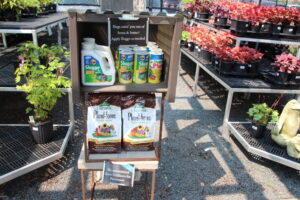
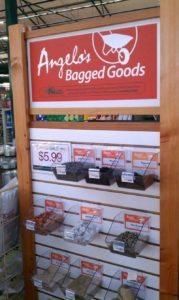
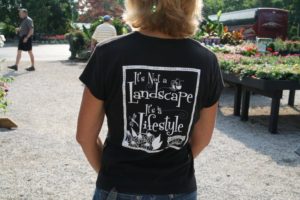
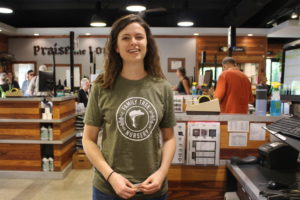
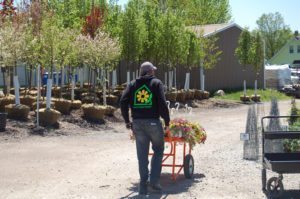
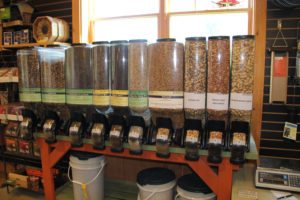
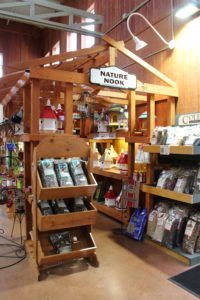

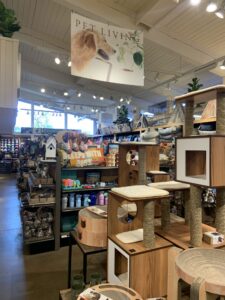
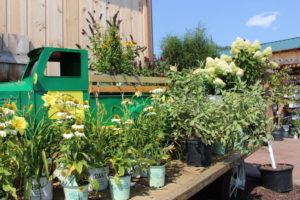
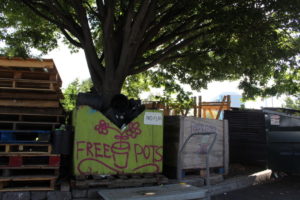
 Videos
Videos





